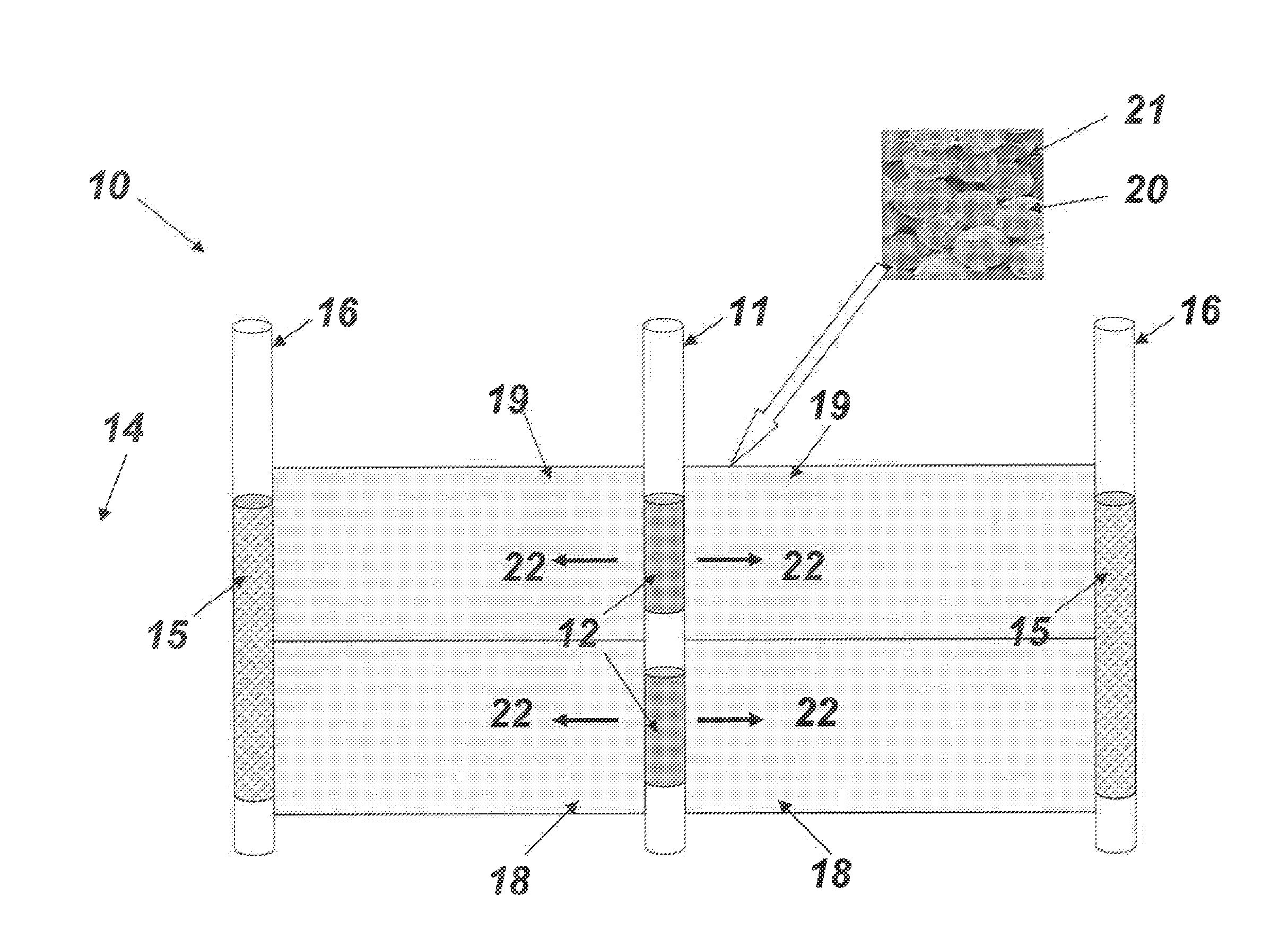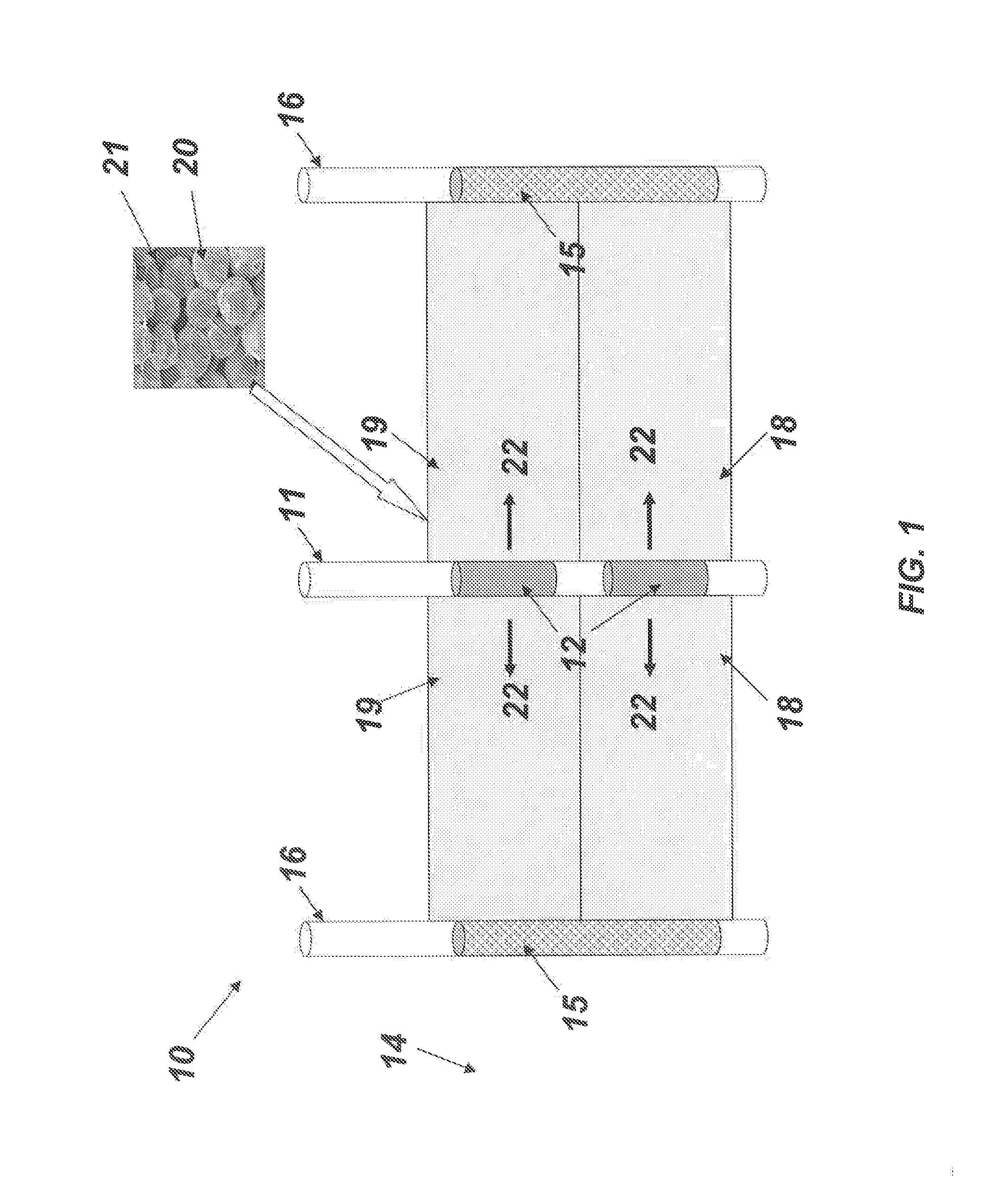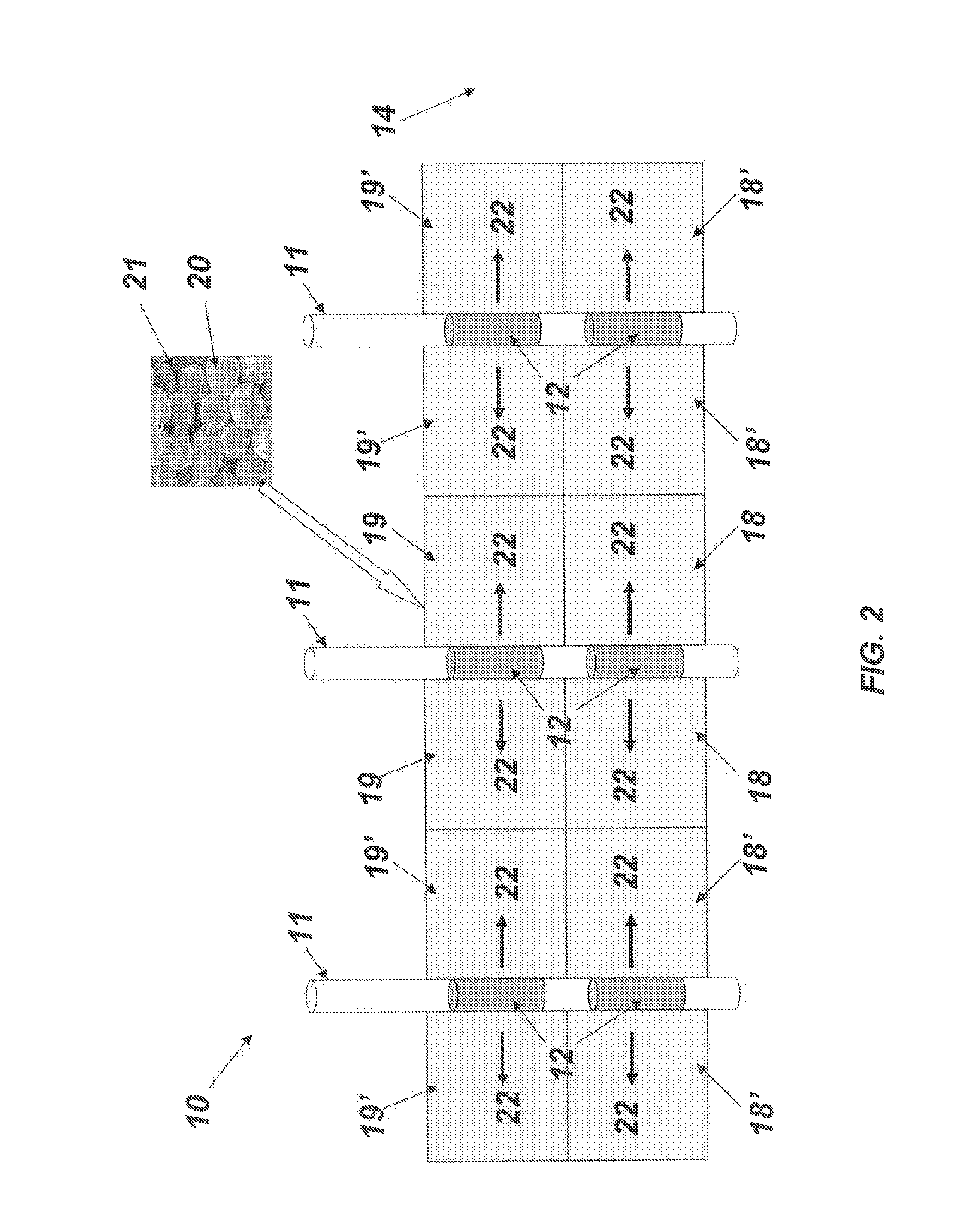Unfortunately, the methods currently used for extracting the heavy oil from these formations require the injection of steam under pressure, such as SAGD (
Steam Assisted Gravity Drainage), and as such are difficult and often uneconomic if the SAGD well pairs are located in proximity to an
outcrop or depleted low pressure steam chambers.
Operating a SAGD steam chamber at lower pressure gives rise to higher steam oil ratios (SORs) but even more significantly at low steam pressures, the steam may not be able to penetrate horizontal shale
layers and thus
restrict the height of the steam chamber, giving rise to higher SORs and a significant
impact on production.
Similar to CSS (Cyclic Steam Stimulation), the SAGD) method has complications, albeit less severe than CSS, due to the lack of steam flow control along the long section of the horizontal well and the difficulty of controlling the growth of the steam chamber.
Also, the steam process uses considerable quantities of water, which even though may be reprocessed, involves recycling costs and energy use.
The startup phase for the VAPEX process can be lengthy and take many months to develop a controlled connection between the two wells and avoid premature short circuiting between the
injector and producer.
The VAPEX process with
horizontal wells has similar issues to CSS and SAGD in
horizontal wells, due to the lack of
solvent flow control along the long horizontal well bore, which can lead to non-uniformity of the vapor chamber development and growth along the horizontal well bore.
Similarly the VAPEX process is limited by the available surface area to the in place bitumen, because the
diffusion process at this contact controls the rate of
softening of the bitumen.
Likewise during steam chamber growth in the SAGD process the contact surface area with the in place bitumen is virtually a constant, thus limiting the rate of heating of the bitumen.
ment. The single well systems described above all suffer from low efficiency and
high energy loss due to the current passes through a significant distance of the formation from the conductive fracture to the surface g
round. Also the systems with two or more wellbores do not disclosed how the
electrode to conductive fracture contact will be other than a
point contact resulting in significant
energy loss and overheating at such a c
ontact. The above referenced methods describe the use of
hydraulic fracturing in its conventional sense, and such application of
hydraulic fracturing of brittle rock to form fractures therein are typically not applicable to ductile formations comprising unconsolidated, weakly cemented se
Construction of hydraulic barriers by jet grouting, freezing, sheet piling, etc are common in civil and mining applications but are generally not suitable or economic at depth.
Hydraulic barriers as conformance systems are common in the petroleum field, such as
sodium silicate grouts, microbial barriers, swelling particles, etc but are intended for sealing zones around boreholes and not intended for barriers kilometers in length and for the need to be continuous.
Microbial barriers suffer from the
disadvantage that they require constant
nutrient feeding, but also are only applicable over modest temperature ranges.
Most of the techniques cited are uneconomic due to the extensive number of wells required, others especially those involving
hydraulic fracturing, describe the use of hydraulic fracturing in its conventional sense, and such application of hydraulic fracturing of brittle rock to form fractures therein are typically not applicable to ductile formations comprising unconsolidated, weakly cemented sediments.
In brittle formations using conventional hydraulic fracturing, the fracture orientation either vertical or horizontal or inclined, and if vertical its
azimuth is controlled by the in-situ formation principal stresses, and as such a continuous vertical barrier along a pre-determined
azimuth can not be constructed by conventional hydraulic fracturing, and especially not in weakly cemented formations.
Techniques used in hard, brittle rock to form fractures therein are typically not applicable to ductile formations comprising unconsolidated, weakly cemented sediments.
Apparent cohesion is generally such a small component of strength that it cannot be effectively measured for strong rocks, and only becomes apparent when testing very weakly cemented sediments.
Ductile frictional materials fail under
shear stress and consume energy due to frictional sliding, rotation and displacement.
However, such a process has not been duplicated in the laboratory or in shallow field trials.
Linear elastic
fracture mechanics is not generally applicable to the behavior of weakly cemented sediments.
 Login to View More
Login to View More  Login to View More
Login to View More 


